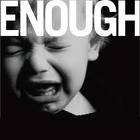Shoe Shine Boy

Based on yesterday's OPOD, I could have made this either "Chicken Week" or "Shoeshine Week". I have decided to go with Shoeshine Boys. I reserve the right to switch back to chickens if I run out of good pictures of shoeshine boys. Anyway, this picture was taken in 1908 in Indianapolis, Indiana. The boy is Greek.
Shoe shining is pretty much a thing of the past, which is too bad. Back when I was growing up, you could always make a little money by shining your parents shoes, and if you were a little more energetic, you could take your little box to a public place. I rarely see shoe shine stands any more.
Shoe shining is pretty much a thing of the past, which is too bad. Back when I was growing up, you could always make a little money by shining your parents shoes, and if you were a little more energetic, you could take your little box to a public place. I rarely see shoe shine stands any more.
Making Lace
 This picture was taken in 1911, and it shows a poor mother and daughter making lace inside their tenement apartment. The picture was taken in New York City. One wonders whether the current economic downturn will lead to such cottage industries again. Now, things imported from China are so cheap, most things could not be made is such a way (certainly a person could not make lace and sell lace). I think eBay has for many become a cottage industry. How about you all . . . do any of you have a little cottage industry going to try and supplement income, or just to have fun?
This picture was taken in 1911, and it shows a poor mother and daughter making lace inside their tenement apartment. The picture was taken in New York City. One wonders whether the current economic downturn will lead to such cottage industries again. Now, things imported from China are so cheap, most things could not be made is such a way (certainly a person could not make lace and sell lace). I think eBay has for many become a cottage industry. How about you all . . . do any of you have a little cottage industry going to try and supplement income, or just to have fun? Factory Workers
 This photograph was taken in 1909, and shows children working in a factory in Tampa, Florida. The factory makes cigar boxes.
This photograph was taken in 1909, and shows children working in a factory in Tampa, Florida. The factory makes cigar boxes.Newspaper Boy
 This picture was taken in 1910, and shows a newspaper boy in Wilmington, Delaware. The boy is 12 years old, and makes 20 cents a day. He has a second job on some days, working in a candy shop.
This picture was taken in 1910, and shows a newspaper boy in Wilmington, Delaware. The boy is 12 years old, and makes 20 cents a day. He has a second job on some days, working in a candy shop.Children Workers
 This picture was taken in 1911, and shows children who work in a Virginia Cotton Mill. It is nice how far we have come in the United States in overcoming poverty, and protecting children. Unfortunately, this picture would reflect conditions that still remain in lots of places in the world.
This picture was taken in 1911, and shows children who work in a Virginia Cotton Mill. It is nice how far we have come in the United States in overcoming poverty, and protecting children. Unfortunately, this picture would reflect conditions that still remain in lots of places in the world.Child Coal Miner
 This picture was taken in 1908, and shows a young boy working at the Turkey Knob Coal Mine near Macdonald, West Virginia. I am really captivated by these old pictures of children in such dire circumstances. The really sad thing to consider is that child labor remains a serious problem in many parts of the world. Sometimes when I buy cheap products at large discount chains I wonder how many times child labor was involved in their production.
This picture was taken in 1908, and shows a young boy working at the Turkey Knob Coal Mine near Macdonald, West Virginia. I am really captivated by these old pictures of children in such dire circumstances. The really sad thing to consider is that child labor remains a serious problem in many parts of the world. Sometimes when I buy cheap products at large discount chains I wonder how many times child labor was involved in their production.Cotton Mill Workers
 This picture shows children who work in a Cotton Mill in Pell City, Alabama. The photograph was taken in 1910. Notice the cotton fibers on the children's hats. Cotton fiber is very dangerous to breath, and the health effects were probably as bad as working in a coal mine.
This picture shows children who work in a Cotton Mill in Pell City, Alabama. The photograph was taken in 1910. Notice the cotton fibers on the children's hats. Cotton fiber is very dangerous to breath, and the health effects were probably as bad as working in a coal mine.There is such a look of hopelessness on these faces. Children robbed of their childhood.
Young Coal Miners
 This photograph was taken in 1911, and shows young boys who work in the Pennsylvania Coal Company coal mine. They were called "Breaker Boys", and they were from the Hughestown Borough in Pennsylvania. You wonder if any of these young boys were ever able to overcome such adversity.
This photograph was taken in 1911, and shows young boys who work in the Pennsylvania Coal Company coal mine. They were called "Breaker Boys", and they were from the Hughestown Borough in Pennsylvania. You wonder if any of these young boys were ever able to overcome such adversity.

























